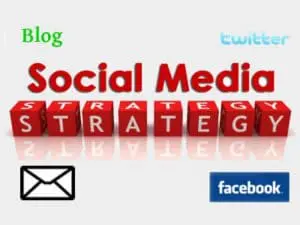
But to use social media correctly for business, it takes more than just sending Tweets and updates into the World Wide Web. You need to understand who your audience is, where they are, and how to reach them. You need to develop a B2B social media strategy.
Who is your audience?
The first step in creating a B2B social media strategy is figuring out exactly who your audience is. Of course, you need to know demographics like age, gender and income level, how often they go online, what social media they use, how they research and determine the best fit for their situation; but the critical factor to figure out is their buying habits. You need a deep understanding of their motivating beliefs, fears, and secret desires.
If you’re interested in going in-depth to understand your ideal customer, download a free Buyer Persona Toolkit, which includes an ebook, a worksheet, and a poster template. You can get your kit here.
Your company probably has at least 3 main Buyer Personas – maybe a hospital security director, a C-suite executive, and a college security director. There may be others, depending on the products and services your business offers. Different Buyer Personas may have different social media preferences.
What social media platforms does your audience use?
Once you have figured out who you’re aiming for, you can choose which social platforms you want to concentrate on. Many businesses can find their target audience on LinkedIn, but don’t ignore Facebook, Pinterest or twitter is your audience is there. You might want to ask some of your customers what social media platforms they use.
Another platform that you might consider is a forum that addresses the questions of your target audience. Borrowing from the above example, maybe a security director forum. And if you can’t find an independent forum that serves your audience, check out Groups on LinkedIn. There’s bound to be group of exactly the people you want to reach. Using Groups or forums you can build authority and thought leadership. . . and you could also find some potential business!
How do you communicate with your audience?
Do you communicate with your prospects mostly online, by phone, or in person? If visitors coming to your website tend to call you rather than fill out a form or click a call-to-action, it’s likely they need help NOW, or they need the assurance of speaking to a real, live person.
To get noticed by your audience on social media, then, you need to
- Write as if you were speaking on the phone. It’s probably softer, more gentle, caring language than cold professionalism or inappropriate humor.
- Encourage communication in the way they prefer. Put your phone number in your status updates often, put it in your Facebook cover page, put it in your Twitter profile.
How often can you contact your audience?
You need to consider two factors when deciding the frequency of your contact:
- What is the best practice for each social media platform?
- How often will your prospects allow you to contact them before they block, unfollow, or ignore you?
For example, if you write a stellar blog post and want to post it to security directors on LinkedIn, you don’t want to send that link to any place in LinkedIn more than twice in one week. However, you could update your status with the post on Monday, post to 3-4 relevant Groups on Tuesday, post to other Groups on Wednesday, post it on your Company Page on Thursday, and post to a few more Groups on Friday. This way you are only touching each person in your network (and Groups) once, or maybe twice, if they are in multiple Groups, or follow your Company Page.
On the other hand, you can post much more to Twitter because each Tweet reaches a much broader audience and the relevancy of a Tweet lasts less than three hours, whereas LinkedIn’s posts last days.
Once you have answered each of these 4 questions, you’ll have an idea of what to publish and what voice and style to use, and how often to do it for each platform. This is the beginning of your social media strategy.
